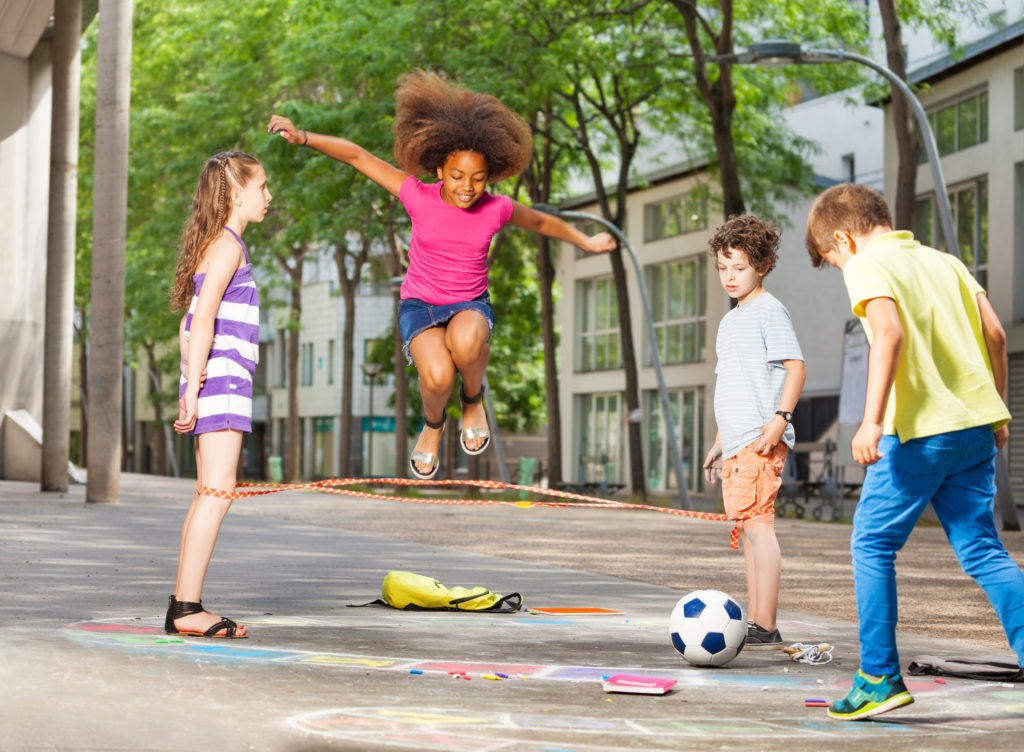Let’s Play! Navigating childhood friendships
Article courtesy of Caroline Fossi, CTW Features
Whether it’s preschoolers playing tag on the playground or teens swapping stories at a sleepover, the school years are a key time for friendships to bloom.
But with today’s busy lifestyles and the distraction of electronic devices, parents need to make sure their children invest time in building these valuable relationships.
Here are some expert tips for helping your kids connect with peers.
Building Blocks
Young children learn how to interact with others through “free creative play,” says Patti Criswell, a Michigan social worker and author of “Friends: Making Them and Keeping Them,” published by American Girl.
Parents can help their little ones bond with buddies by setting up play dates and modeling good behavior, like sharing and taking turns.
When hosting your child’s friends, it’s ok to plan an activity like a craft, but they also need time for unstructured fun. Set them loose in the backyard or let them experiment in the kitchen, for instance.
“Let kids be in the driver’s seat in terms of play,” Criswell says.
Avoid hovering over your child and his playmates. If there’s a fight or a child is upset, the adult’s main role is to help with problem-solving, says Dr. Kerrie Murphy, a child psychologist and clinical assistant professor at the Medical University of South Carolina.
Tween Time
Once kids hit the adolescent or teen years, parents have less control over their children’s friendships.
But that doesn’t mean you should butt out entirely. Get to know your kids’ friends and their parents. Ask about how their relationships are going and keep the lines of communication open, Murphy says.
This is also a time of life when cell phones and social media come into play. Technology can be both a help and a hindrance when it comes to fostering friendships, Murphy says.
On one hand, technology makes it easier than ever for kids to stay in touch with friends near and far.
But social media can also make them feel insecure or left out when they view others’ fun-filled posts and perfectly-crafted profiles.
Adults can help kids put the online social scene into perspective by explaining that people tend to post an idealized version of their lives, Murphy says. “Parents can be a helpful sounding board for kids.”
Breaking the Ice
Forming friendships can be trickier if your child is naturally reserved or shy. While school offers plenty of opportunities to engage with peers, crowded classrooms and noisy hallways can overwhelm introverts.
If your child is nervous about approaching others, help her brainstorm ice-breaker questions and conversation topics, or act out different social scenarios in advance.
To help timid kids open up, try facilitating friendships in their comfort zones. Encourage your child to invite friends over to your place, or to sign up for a school club or after-school activity that interests her.
Extracurricular programs, from soccer teams to church youth groups, can be a great way for shy kids to meet others with common interests. “It creates a more natural connectivity,” Murphy says.
Of course, not every acquaintance has to be your child’s BFF. Kids benefit from having different types of friends – the one who makes them laugh, for instance, or the one who’s a great listener.
By cultivating a diverse peer network, your child will still have buddies to hang out with even if she’s feuding with a friend, or a pal moves away.
Dealing with ‘Frenemies’
Every friendship has its ups and downs. But sometimes, relationships can turn sour.
To help their kids navigate social struggles, parents should talk to them regularly about what it means to be a good friend, and how to respond to toxic behavior or bullying.
“A healthy relationship is something that makes you feel better,” Murphy says.
If your child’s companion is regularly bringing her down, it might be time to take a break from that friend for a while.
Kids should also learn how to respectfully manage conflict, set boundaries and stand up for themselves, without parents constantly getting involved.
“When we don’t let kids develop their own voice, we inhibit their resiliency,” Criswell says. “Resiliency comes from having faith in their abilities.”
In cases of bullying, however, adult intervention is usually required.
If your child, or someone he knows, is being bullied in person or online, he should tell a trusted adult such as a parent, teacher, school counselor, or medical practitioner.
“Bullying won’t stop unless it’s addressed,” says Julie Hertzog of PACER’s National Bullying Prevention Center, based in Minneapolis. “When people are silent about it, it’s going to get worse.”
Quality Time
For people of any age, the main ingredient for forming friendships is “shared experiences,” Criswell says.
Each positive moment shared by friends makes their bond grow stronger, she says. “It’s like pearls on a necklace.”
Some connections stem from proximity, like the pals in your neighborhood, while others grow from mutual interests or activities.
“If you really click with someone, that’s worth putting effort and energy into,” Criswell says.
Conflicts with Grown-Ups
Peer friendships are complicated enough, but what if your child isn’t getting along with an adult in their life, such as a teacher or coach?
The first step, experts say, is to listen to your child’s concerns, then consider both sides of the story.
For instance, if your child says a teacher is being mean or unfair, the truth may lie somewhere in the middle.
Next, determine whether this is a one-time issue or a persistent problem.
If it’s an ongoing concern, help your child problem-solve. If she’s old and mature enough, encourage her to respectfully share her concerns with the other party – as long as she feels safe and comfortable doing so.
“Adults don’t deserve blind respect,” says Patti Criswell, a Michigan social worker. “They’re not always right.”
Most importantly, let your child know you’ll support them and will step in if needed, Criswell says. They need to hear: “I’ve got your back.”
© CTW Features



